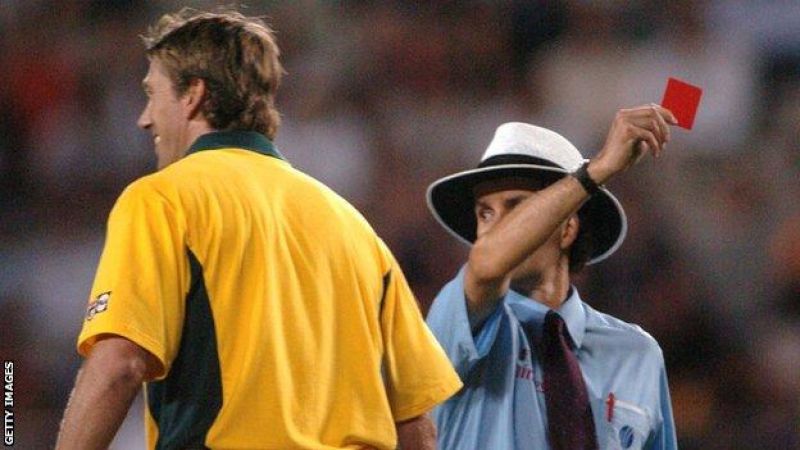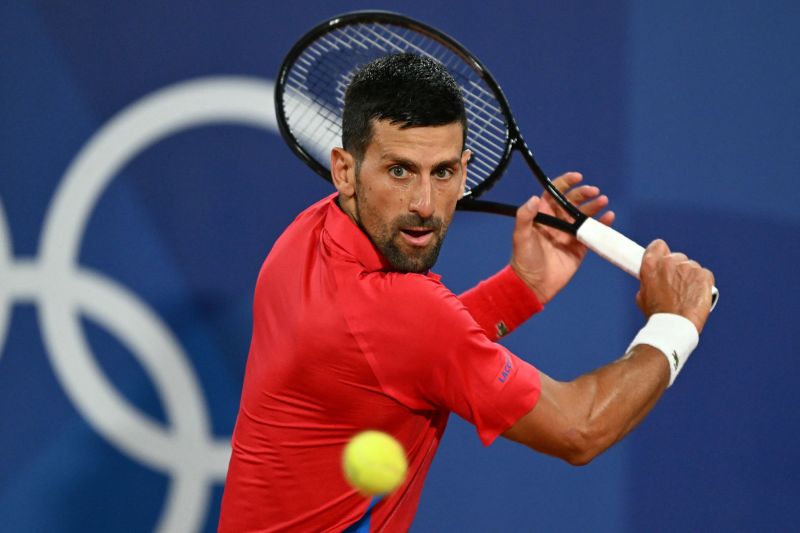By Daily Sports on December 8, 2016

Cricket is set to introduce sendings-off for the first time next year, while the size of bats is to be limited.
Umpires will be given the power to eject players from a game for serious disciplinary breaches.
MCC World Cricket Committee member Ricky Ponting explained that sanctions needed to be implemented.
"We're talking about a significant change to lower-level cricket because it has got completely out of hand down there," the ex-Australia captain said.
MCC (the Marylebone Cricket Club) remains the guardian of the laws and spirit of the game, and its world cricket committee - established in 2006 and comprised of 12 current and former top international players - has been a leading independent voice on the game's major issues.
The new laws will be implemented at all levels of the game from 1 October 2017, subject to approval by MCC's main committee.
According to the proposed new law, agreed at the world cricket committee's meeting in Mumbai, players will be dismissed for:
Threatening an umpire physically assaulting another player, umpire, official or spectator
any other act of violence on the field of play.
Ponting added: "It got to the state where something had to happen to prevent those things happening on the international stage.
"The modern player now understands their role in society, about being role models and want to play the game the right way for younger kids."
The committee also debated sanctions including run penalties and sin-bins for lesser offences, but decided it would be difficult to achieve consistency around the world - and may introduce an appendix to the laws in order for governing bodies or leagues to implement their own system.
Bat edges and depths to be limited
Following much debate in the past few years over bat sizes, and a call for restrictions from the International Cricket Council in June, specific size limitations to the edge and depth of bats will be added to the laws as the committee believes "the balance of the game has tilted too far in the batsman's favour" - with some mis-hit shots clearing the boundary for six.
Bat edges will have a maximum allowance of 40mm and bat depths must not exceed 67mm (60mm plus an allowance of 7mm for a possible curve on the face of the bat).
"Many of the top players' bats have edges of between 38mm and 42mm, but there are some which have edges of up to 50mm, which was felt to be excessive and in need of restriction," the committee concluded.
While a bat gauge will be used to enforce the new restriction in the professional game, a moratorium will allow amateur players to continue to use their existing bats which may be in breach of the new law.
Law on ball striking a fielder's helmet to change
Catches and stumpings will now be permitted after the ball has struck a helmet being worn by a fielder, or become lodged or trapped in the grille of such a helmet - given the wearing of helmets by close fielders has been made compulsory at some levels.
However, a ball striking an unattended helmet behind the wicketkeeper will still earn five runs for the batting side.
Among its other discussions:
The committee decided the law on ball-tampering would not be changed
proposals for four-day Tests were debated but the committee was evenly split
the committee also reaffirmed its support for (a) Twenty20 cricket being added to the Olympic Games, and (b) a World Test Championship to be introduced.
•Photo shows Cricketer being shown a Red Card
Source Daily Sports
Posted December 8, 2016
You may also like...

Sarrismo comes of age in premiership; Benin Warriors...

Roma Appoint Fonseca as New Head Coach

[UPDATED] Women’s W’Cup: England beat host Australia, face...

Six Positive Coronavirus Tests In Premier League

Kalu, Dele-Bashiru rejoin Watford for pre-season

Ilechukwu Thrilled With MFM Win Over Rivers United...

 AFCON 2025: Super Eagles get one huge advantage ahead of Algeria quarterfinal tie
AFCON 2025: Super Eagles get one huge advantage ahead of Algeria quarterfinal tie Nip It In The Bud Now: Osimhen Must Be Genuinely Reached Out To • A DAILY SPORTS NIGERIA SURVEY
Nip It In The Bud Now: Osimhen Must Be Genuinely Reached Out To • A DAILY SPORTS NIGERIA SURVEY  Nigeria vs Mozambique: Osimhen's attitude stinks as Iwobi steps out of Okocha's shadow
Nigeria vs Mozambique: Osimhen's attitude stinks as Iwobi steps out of Okocha's shadow AFCON 2025: That pass was too good — Oliseh hails Super Eagles star with big impact
AFCON 2025: That pass was too good — Oliseh hails Super Eagles star with big impact AFCON 2025: Super Eagles Coach, Eric Chelle Hints On Punishing Osimhen Over Bust-up With Lookman
AFCON 2025: Super Eagles Coach, Eric Chelle Hints On Punishing Osimhen Over Bust-up With Lookman 'Not physically ready' - Djokovic out of Adelaide
'Not physically ready' - Djokovic out of Adelaide Stop experiments and get manager who fits Man Utd DNA - Neville
Stop experiments and get manager who fits Man Utd DNA - Neville No deal in place for Fury comeback
No deal in place for Fury comeback 'It means the world to me' - Chelsea appoint Rosenior
'It means the world to me' - Chelsea appoint Rosenior Nigeria cruise past Mozambique into Afcon quarter-finals
Nigeria cruise past Mozambique into Afcon quarter-finals_2.jpeg) Nigeria vs Mozambique: Super Eagles’ predicted XI – Lookman, Chukwueze, Osimhen to star in Chelle’s bullish setup
Nigeria vs Mozambique: Super Eagles’ predicted XI – Lookman, Chukwueze, Osimhen to star in Chelle’s bullish setup AFCON 2025: They couldn't qualify for the World Cup — Ex-Leeds star doubts Super Eagles chances in Morocco
AFCON 2025: They couldn't qualify for the World Cup — Ex-Leeds star doubts Super Eagles chances in Morocco Rangers International going, going . . . (63,451 views)
Rangers International going, going . . . (63,451 views) Amaju Pinnick: A cat with nine lives (54,737 views)
Amaju Pinnick: A cat with nine lives (54,737 views) Second Term: Amaju Pinnick, Other NFF Heavyweights Home to Roost •How Pinnick Broke the Jinx (52,639 views)
Second Term: Amaju Pinnick, Other NFF Heavyweights Home to Roost •How Pinnick Broke the Jinx (52,639 views) Current issues in Nigerian sports: Matters arising (52,307 views)
Current issues in Nigerian sports: Matters arising (52,307 views) Sports Development: Zenith Bank on the zenith (52,237 views)
Sports Development: Zenith Bank on the zenith (52,237 views) Missing $150,000 IAAF Grant: Solomon Dalung’s Hide and Seek game (52,151 views)
Missing $150,000 IAAF Grant: Solomon Dalung’s Hide and Seek game (52,151 views) Gov. Abdullahi Ganduje’s solid footprints, commitment to sports development in Kano State (52,003 views)
Gov. Abdullahi Ganduje’s solid footprints, commitment to sports development in Kano State (52,003 views) NFF Presidency: Pinnick, Maigari, Ogunjobi, Okoye in Battle for Supremacy (51,569 views)
NFF Presidency: Pinnick, Maigari, Ogunjobi, Okoye in Battle for Supremacy (51,569 views) Olopade, BET9A wave of revolution in NNL (50,750 views)
Olopade, BET9A wave of revolution in NNL (50,750 views) Commonwealth Games 2018: Shame of Muhammadu Buhari, Solomon Dalung (49,275 views)
Commonwealth Games 2018: Shame of Muhammadu Buhari, Solomon Dalung (49,275 views) Ibrahimovic’s Man U exit: Whose decision is it? And in whose interest? (47,666 views)
Ibrahimovic’s Man U exit: Whose decision is it? And in whose interest? (47,666 views) John Mikel Obi: Segun Odegbami’s Outrageous Call! (47,137 views)
John Mikel Obi: Segun Odegbami’s Outrageous Call! (47,137 views)